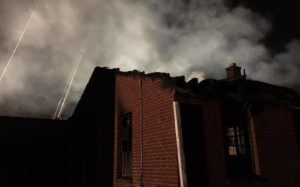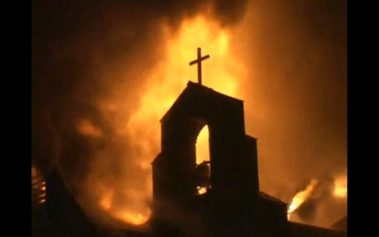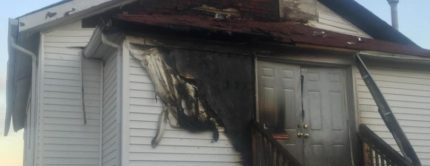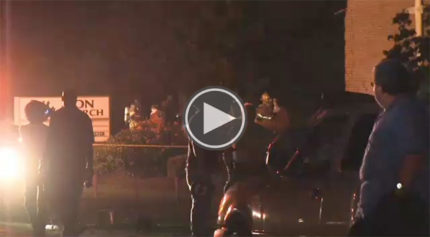[playwirevid id=’3690308′]
By David A. Love
As the nation grapples with the massacre at Emanuel AME Church in Charleston, S.C., one of the oldest Black churches in the South, other Black churches have become recent targets of arson. From slavery and the days of Jim Crow through the civil rights movement and beyond, white supremacists have targeted the Black church because of its importance as a pillar of the Black community, the center for leadership and institution building, education, social and political development and organizing to fight oppression. Strike at the Black church, and you strike at the heart of Black American life.
In Charlotte, N.C., authorities say a June 24 fire at Briar Creek Baptist Church was the result of arson and is being investigated as a possible hate crime. NBC News reported that more than 75 firefighters were needed to extinguish the three-alarm fire, and an hour passed before the blaze was under control. Two firefighters received medical treatment for heat-related injuries. The church sustained $250,000 in damage, including a collapsed ceiling and significant damage to a space used for a children’s summer camp. The sanctuary was spared, sustaining smoke damage along with the gymnasium.
A June 23 fire at God’s Power Church of Christ, a predominantly Black church in Macon, Ga., has been ruled as arson, although there is no indication it was a hate crime. As was reported in the Macon Telegraph, the front doors of the church were locked and wired shut when authorities arrived, but a side door was unlocked. The Federal Bureau of Alcohol Tobacco Firearms and Explosives was called, as is the case with church fires, and authorities also noted that electronics and other air conditioning equipment had been stolen from the church in two burglaries. A $10,000 reward is available through the Georgia Arson Hotline for information leading to the arrest of an arsonist.
Two white teens were responsible for starting a blaze at the New Holy Deliverance Outreach Ministry in Axton, Va., in 2013. One of the teens admitted “he burned down the church because of the race, color and ethnicity of its congregation.”
In December 2010, a white man seeking to “gain status” with a white supremacist gang firebombed a Black church in Crane, Texas. Immediately after President Barack Obama’s inauguration in 2008, three white men doused the partially built Macedonia Church of God in Christ with gasoline and set it on fire. And in 2006, a cross was burned outside a Black church in Richmond, Va.
“In small towns, losing your church means more than losing your place of worship,” said civil rights historian Taylor Branch in the Baltimore Sun in 1996, when Black churches experienced an epidemic of burnings.
According to The Huffington Post, at least 91 churches were violently attacked since 1956. Further, between 1995 and 1996, more than 30 Black churches were burned, prompting Congress to enact the Church Arson Prevention Act. One of these churches was the Inner City Church in Knoxville, Tenn., in which someone threw 18 Molotov cocktails into the church and wrote racial slurs on the walls, including “White is right,” according to the Los Angeles Times.
As reported in The Atlantic, during that period, the South Carolina churches that were attacked by arsonists included Mt. Zion AME Church in Williamsburg, Macedonia Baptist Church in Manning, Saint Paul Baptist Church in Lexington, Rosemary Baptist Church in Barnwell, St. John Baptist Church in Dixiana, Effington Baptist Church, Mount Olivet Baptist Church and Allen’s Chapel.
“It is the newspaper, the insurance company, the dance hall and the Elks Lodge all rolled into a church,” said Branch of the power of the Black church. According to Branch, during the civil rights movement churches were bombed or burned because of their racial, economic or social justice efforts, whereas since that time churches have been targeted without cause, merely for existing.
Perhaps the most well-known attack on a Black church was the bombing of the 16th Street Baptist Church in Birmingham, Alabama, in 1963. Four girls were killed and 20 others injured in the bombing, which was the work of the Ku Klux Klan. The church served as a center of the city’s African American community and was used as a meeting place for the civil rights movement. The tragedy brought national and international attention to the injustices and terrorism facing Blacks in the South, and was a flashpoint in the struggle for equal rights.
Always regarded as a sanctuary for a people seeking uplift, safety and empowerment, the Black church always has been under attack because Black people always were under attack. We should remember that Emanuel AME was once burned down because of its ties to the Denmark Vesey slave rebellion in 1822. At a time of increased assaults against Black people in the streets, in the courts and the state house, in police custody and in all realms and spheres of life, the Black church is once again under assault.



